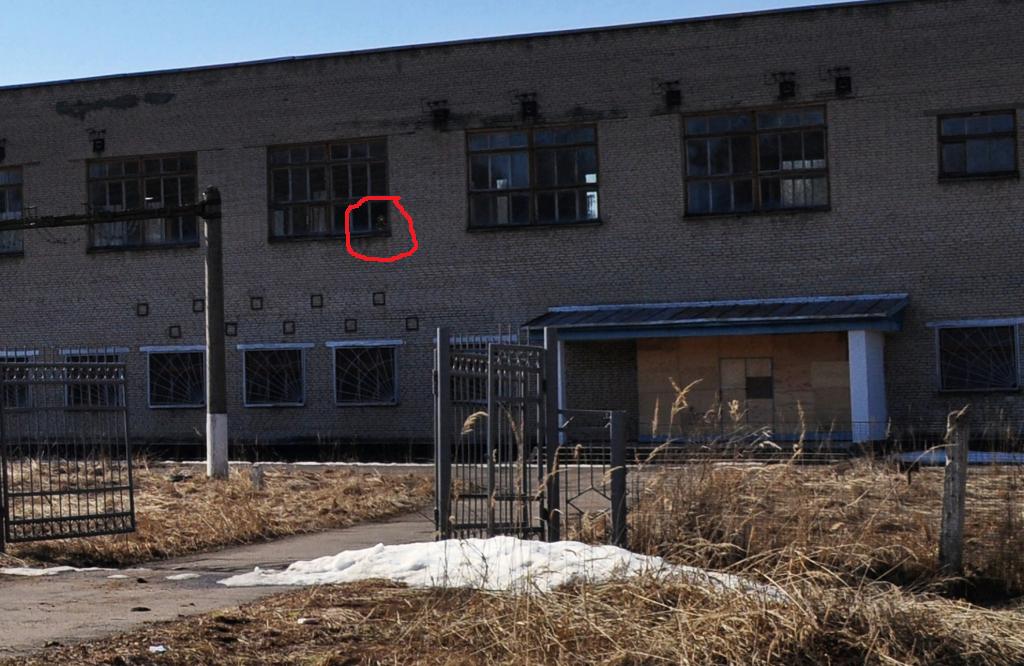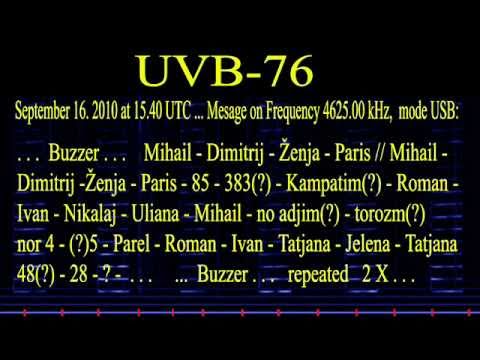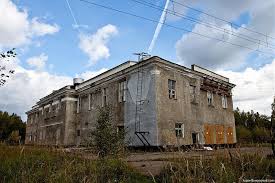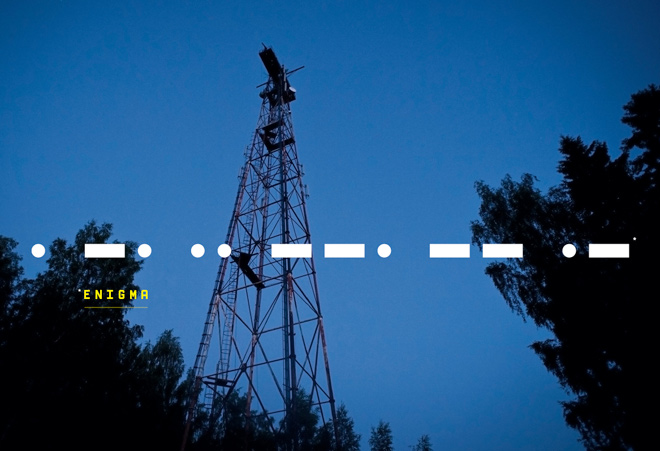
|
|||
Enigma: The mystery of Russia's UVB-76 radio transmissions explored
Source : http://www.wired.co.uk/magazine/archive/2011/11/features/enigma/viewall
UVB-76, also known as The Buzzer, is the nickname given by radio listeners to a shortwave radio station that broadcasts on the frequency 4625 kHz. It broadcasts a short, monotonous About this sound buzz tone (help·info), repeating at a rate of approximately 25 tones per minute, for 24 hours per day. On rare occasions, the buzzer signal is interrupted and a voice transmission in Russian takes place. It has been active since at least the late 1970s or early 1980s, when the first reports were made of a station on this frequency. Its origins have been traced to Russia, but although several theories with varying degrees of plausibility exist, its actual purpose remains unknown to the public. From a lonely rusted tower in a forest north of Moscow a mysterious short wave radio station transmitted day and night. For at least the decade leading up to 1992, it broadcast almost nothing but beeps; after that, it switched to buzzes, generally between 21 and 34 per minute, each lasting roughly a second -- a nasal foghorn blaring through a crackly ether. The signal was said to emanate from the grounds of a voyenni gorodok (mini military city) near the village of Povarovo, and very rarely, perhaps once every few weeks, the monotony was broken by a male voice reciting brief sequences of numbers and words, often strings of Russian names: "Anna, Nikolai, Ivan, Tatyana, Roman." But the balance of the airtime was filled by a steady, almost maddening, series of inexplicable tones. The amplitude and pitch of the buzzing sometimes shifted, and the intervals between tones would fluctuate. Every hour, on the hour, the station would buzz twice, quickly. Why? It was a mystery. None of the upheavals that had enveloped Russia in the last decade of the cold war and the first two decades of the post-cold-war era -- Mikhail Gorbachev, perestroika, the end of the Afghan war, the Soviet implosion, the end of price controls, Boris Yeltsin, the bombing of parliament, the first Chechen war, the oligarchs, the financial crisis, the second Chechen war, the rise of Putinism -- had ever kept UVB-76, as the station's call sign ran, from its inscrutable purpose. During that time, its broadcast came to transfix a small cadre of shortwave radio enthusiasts, who tuned in and documented nearly every signal it transmitted. Although the Buzzer (as they nicknamed it) had always been an unknown quantity, it was also a reassuring constant, droning on with a dark, metronome-like regularity. But on June 5, 2010, the buzzing ceased. No announcements, no explanations. Only silence. No one knew why. The following day, the broadcast resumed as if nothing had happened. For the rest of June and July, UVB-76 behaved more or less as it always had. There were some short-lived perturbations -- including bits of what sounded like Morse code -- but nothing dramatic. In mid-August, the buzzing stopped again. It resumed, stopped again, started again. Then on August 25, at 10.13am, UVB-76 went entirely haywire. First there was silence, then a series of knocks and shuffles that made it sound like someone was in the room. Before this day, all the beeping, buzzing, codes and numbers had hinted at an evil force hovering on the airwaves. Now it seemed as though the wizard were suddenly about to reveal himself. For the first week of September, transmission was interrupted frequently, usually with what sounded like recorded snippets of "Dance of the Little Swans" from Tchaikovsky's Swan Lake. On the evening of September 7, something more dramatic -- one regular listener even called it "existential" -- transpired. At 8.48pm Moscow time, a male voice issued a new call sign, "Mikhail Dmitri Zhenya Boris," indicating that the station was now to be called MDZhB (though listeners still widely refer to it as UVB-76). This was followed by one of UVB-76's (or MDZhB's) typically nebulous messages: "04 979 D-R-E-N-D-O-U-T" followed by a longer series of numbers, then "T-R-E-N-E-R-S-K-I-Y" and yet more numbers. Just a few years before, such a remarkable development on a shortwave station would have been noted by only a tiny group of hobbyists. But starting the previous June -- after the first, mysterious outage -- a feed of UVB-76 had been made available online (UVB-76.net), cobbled together by an Estonian tech entrepreneur named Andrus Aaslaid, who has been enthralled by shortwave radio since he started primary school. "Shortwave was an early form of the internet," says Aaslaid, who goes by the nickname Laid. "You dial in, and you never know what you're going to listen to." During one 24-hour period at the height of the Buzzer's freak-out in August 2010, more than 41,000 people listened to Aaslaid's feed; within months, tens of thousands, and then hundreds of thousands, were visiting from the US, Russia, Britain, the Czech Republic, Brazil, Japan, Croatia and elsewhere.
Before Aaslaid's internet relay and the events of 2010, the dedicated trackers of UVB-76 probably numbered no more than a thousand. Some had been listening in their spare time since the 1980s, holed up in attics, garages, basements and cluttered offices. Many spent their days working for large organisations -- insurance companies, telecommunication conglomerates, militaries, universities. They lived in West Germany, Britain, the Netherlands, the US. Some hesitated to disclose their locations to fellow listeners; others used pseudonyms. Before the fall of Communism, many of them actually believed they were in danger, assuming that they could be tracked (through technological methods that were never quite clear) by the same shadowy forces -- KGB agents or radio engineers at the CIA or MI6 or Mossad -- that controlled the stations they obsessed over. The listeners often thought they might have unearthed something top-secret, that there were files at foreign spy agencies with their names on them. They loved that they didn't know what they were listening to and were fascinated by the unending strangeness of this persistent, mindless, clandestine, evil beeping.  "It was thrilling," says Ary Boender, 57, a financial consultant who lives near Rotterdam, in the Netherlands. He first tuned in to UVB-76 in January 1983. He says he was looking for another station, rolling across the dial, and suddenly he heard the crackly, wispy beep beep beep. And stopped. This is how many fans talk about their discovery of the station: it was late, and they were looking for something else -- a weather channel, a maritime report, some Air Force chatter -- when all of a sudden UVB-76 broke through and they were captivated, unable to stop listening to the haunting pulse that travelled through the snowy dark all the way to their receivers. The question they all wanted answered was, what the hell is this? "The fun is and was to find out who they are and where they transmit from and what the purpose is," Boender says. Before the internet, shortwave fans knew of one another's existence through niche publications, whether photocopied newsletters such as Monitoring Times, or small-circulation magazines such as Popular Communications (cover line on the October 1985 issue: "eavesdropping on aircraft communications!"). If something exciting happened on UVB-76 -- when there was an uptick in the duration of the beeps from, say, 1.9 to 2.2 seconds, or when the timbre of the beeping shifted, or when there was a rare pause in the transmission -- fans would write in and speculate about meanings. They would clock the frequency of the beeping and listen for discrepancies or numbers or voices just beneath the veil of sound. They would ferret out fellow newsletter subscribers and members of the shortwave radio associations and share their findings. Even today, listening to UVB-76 is like listening to a world that hasn't existed for decades. This feels especially true late at night when you're in a dark room, headset on, enveloped by all the pops and whirs and snippets of anonymous voices from other signals seeping across the airwaves -- "these little trips into fantasy," as Room641A puts it, that "happen when you are sitting in front of your receiver passing by Radio Havana at three in the morning."  Most observers believe that UVB-76 is an idiosyncratic example of what's called a numbers station, used to communicate encrypted messages. Typically, these stations transmit numbers in groups of five, making it impossible to detect gaps between words and sentences. The numbers can be decoded using a key held by the intended listener. Numbers stations are thought to date back to world war one, as documented by the Conet Project, a compilation of recordings that was first released in 1997. Drug runners are believed to have used numbers stations; so too are the North Koreans, the Americans, the Cubans and the British. Indeed, shortwave hobbyists suspect MI6 was behind the most famous numbers station in the world, the Lincolnshire Poacher. An online group calling itself Enigma 2000 (an acronym for the European Numbers Information Gathering and Monitoring Association) collects data about numbers stations around the world. Jochen Schäfer, who heads the group's German branch, says of UVB-76, "It's no typical numbers station, but it is one." Usually, he says, numbers stations begin their transmissions with a call sign, then move on to a specially produced introduction. The Lincolnshire Poacher got its moniker because every broadcast kicked off with the first two bars of the English folk song of the same name -- before they started broadcasting numbers. This station is different because of its structure, Schäfer says. Most of the time, there is just the buzzing. Messages are irregular. This anomalous format has prompted some UVB-76 listeners to suggest that it is not a numbers station at all. One former high-ranking European official and longtime student of Soviet jamming of western radio stations, is known to his fellow UVB-76 fans as "JM". He maintains that the Buzzer's purpose is to transmit coded orders to military units within Russia, not to spies outside its borders. JM notes that most of what has been pieced together about the station's specs -- its frequency of 4,625kHz, its main 20-kilowatt transmitter, its five-kilowatt backup transmitter, and its horizontal-dipole antenna -- points to conventional, military use. Bryan Tabares, a 21-year-old production engineer in Jacksonville, Florida, agrees and puts forward an even more innocuous theory to explain the disruptions of 2010: He believes it was merely "pink noise" created by sound engineers to calibrate audio equipment. That's all. "Everything that's happened points to an equipment upgrade or calibration," Tabares says. Boender, the financial consultant near Rotterdam, says he is now confident that UVB-76 is controlled by the military, based on his analysis of known Russian military stations. That type of sleuthing seems to be a large part of the appeal for aficionados. He gives another example: "We discovered a Russian network in the early 90s, but it took us a couple of years before we actually found out who they were. It appeared to be a network of Soviet embassies, consulates, ministries and most likely also the KGB and GRU [Russia's largest foreign intelligence agency]. A number of people around the globe listened, and we exchanged messages and recordings and analysed them until we discovered who they were."He adds, "That's what makes it fun."  It took a 37-year-old computer engineer in Tallinn, Estonia, to drag UVB-76 into the internet era. In the process, Andrus Aaslaid has expanded the station's audience in a way that no devoted listener could have anticipated. Though Aaslaid isn't well known internationally, inside Estonia he's something of a poster boy for the tech scene, which has produced not only giants such as Skype but a slew of rapidly growing startups. In the early 90s, Aaslaid launched his first company, LaidWare, providing banks with ATM-networking systems. Then he ran a firm that was acquired by the quartet behind Skype. Then he did a stint in Silicon Valley. After that he served as an adviser to two Estonian economic affairs and communications ministers, including Andrus Ansip, the country's current prime minister. Like many entrepreneurs, Aaslaid has a frenetic quality and he resists convention. He has a hard time staying at a job for more than a year. He dropped out of university after two months. ("I was already working as a programmer," he says. "We learned it hands-on. You didn't need a degree.") Aaslaid discovered shortwave radio as a young boy, and even when he talks about the UVB-76 internet relay, he sounds like a teenager, fascinated by a world he does not quite understand. He turns on his receiver and we listen for a few minutes to random sound fragments: a peace activist talking about "rediscovering Hiroshima," a Russian newscaster describing carnage in the Gaza Strip, the end of a song by Supertramp. "I've spent nights just randomly browsing and sometimes getting really, really drunk," Aaslaid says. "People's lives are so well planned and predictable," he says. "In some ways, UVB-76 represents the good kind of unpredictability and mystery." Hooking up the relay was technologically simple but physically challenging. For his antenna, he scrounged 70 metres of copper-plated wire and, in the middle of the night, strung it between the roof of his office and the roof of his apartment building next door. Then he hooked up his shortwave scanner to his computer. To handle the streaming audio, he used British service provider MixStream. Several weeks later, he upgraded to a custom-built magnetic loop antenna and swapped his scanner for a software-based radio. Over the next six months, 200,000 listeners dropped in. Like any good shortwave junkie, Aaslaid watches the watchers -- noting that, after the US, the number-two source of interest is Russia. Aaslaid says he's received emails from artists and musicians who claim the Buzzer has inspired them. X-Ray Press, a "maths rock" band in Seattle, released an album this year called UVB-76, which features Buzzer-like buzzing. Sherri Miller and Mario Fanone, two musicians in Buffalo, New York, named their band UVB-76 and start each live set with a sample of the Buzzer. 
Aaslaid remains fascinated. "It has transmitted voice messages, it has been mute, its frequency has been hijacked by pirates, it has run through maintenance with all the related voice messages and test runs, it's had loads of strange noises, transmitted 24 hours with extremely high power..." he writes. "Therefore I have fallen for it!" When I ask him why anyone cares about UVB-76, he replies by invoking the universal connectivity that shortwave allows, even in places far from a cell tower. "Imagine somebody with a Morse key or a reel-to-reel tape deck in the Namibia desert, running a shortwave transmitter off a diesel generator and sending music or messages toward the ionosphere. In the middle of the night, it does not get any more spiritual than that." A new intrigue about UVB-76 is the question of its location. Soon after the upheavals of August and September 2010, listeners reported that the station's position seemed to have moved. JM has since helped trace its rough location to near the town of Pskov, close to Russia's border with Estonia. Ary Boender theorises that the move was related to a Russian military reorganisation that took place that month, when the Moscow and Leningrad military districts were merged to form a new command centre in St Petersburg. Today, the mini military city in Povarovo, from which the cipher broadcast for so many decades, is nearly abandoned. Around the voyenni gorodok, there are gates and walls with signs -- "military vehicles only" -- but no guards or electrified fences, and the gates are not locked. The only activity is near the housing blocks filled with the wives and children and grandchildren of Soviet veterans. "This was like paradise," says one resident, Natalia, whose late husband, Sergey Nikolayevich, served as driver to the commander of the voyenni gorodok. When asked about the wrought-iron fence roughly 30 metres from the entrance to her apartment building, she says she never enters. On the other side is the radio tower, and no one, according to Natalia, ever goes there. The one-lane road that leads to the tower stretches about half a kilometre past a handful of empty buildings and a thick pine forest. A chain-link fence surrounds the tower. Between 30 and 45 metres tall, it's red and white and rusting, with three or four satellite dishes attached to it. There appears to be a large underground facility: the muddy pitch on which the tower stands is riddled with metal cylinders (presumably ventilation shafts) rising out of the ground, and there is a very small pink building that looks like the entrance to a descending staircase. Also, there's a door that's partially ajar on the side of a stone structure. Inside, you'll see a black hole where there must have been a ladder several years or decades ago, and if you drop a rock in this hole, it will take about a second to reach the bottom -- whatever is down there is at least ten metres below ground. Just beyond the chain-link fence and the radio tower is another one-storey building. There is a large antenna, and a barking mutt leashed to a cable that's strung from a tree to the building. The front door appears to be locked. There is no light on inside; no one comes in or out. But someone has been here. The dog, after all, must be fed. Shortwave radio Parts Geek reviews of the strange transmissions of UVB-76 have not been able to determine the meaning. Since these reviews have yielded the probable location of the signal the radio parts geek enthusiasts will continue listening for any new developments. Submit News/Videos/Links | Discuss article | Article Link | More Unsolved and Unexplained Mysteries |
More can be addded on request. Direct your requests at vinit@theunexplainedmysteries.com
